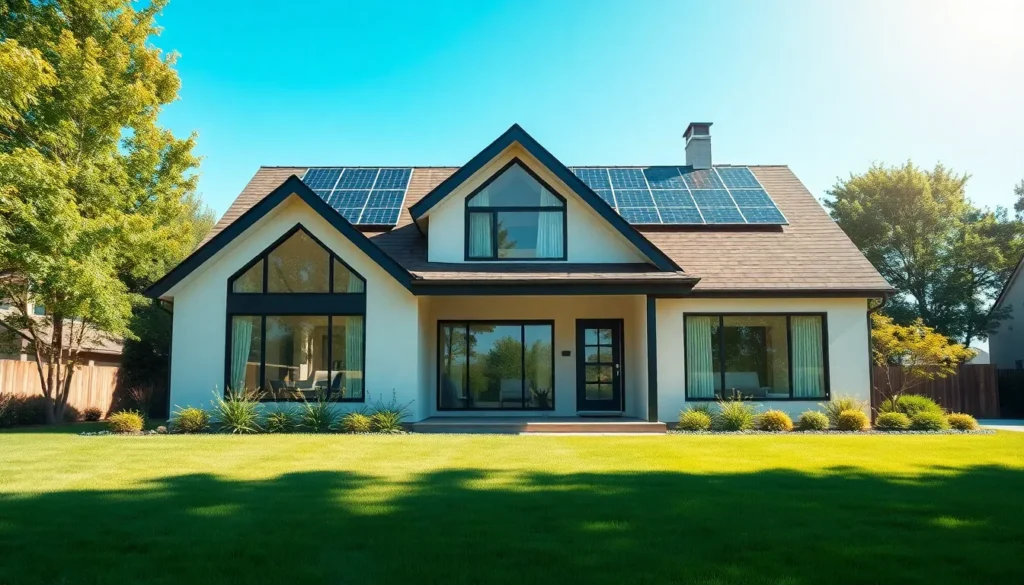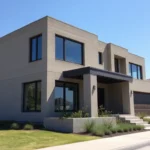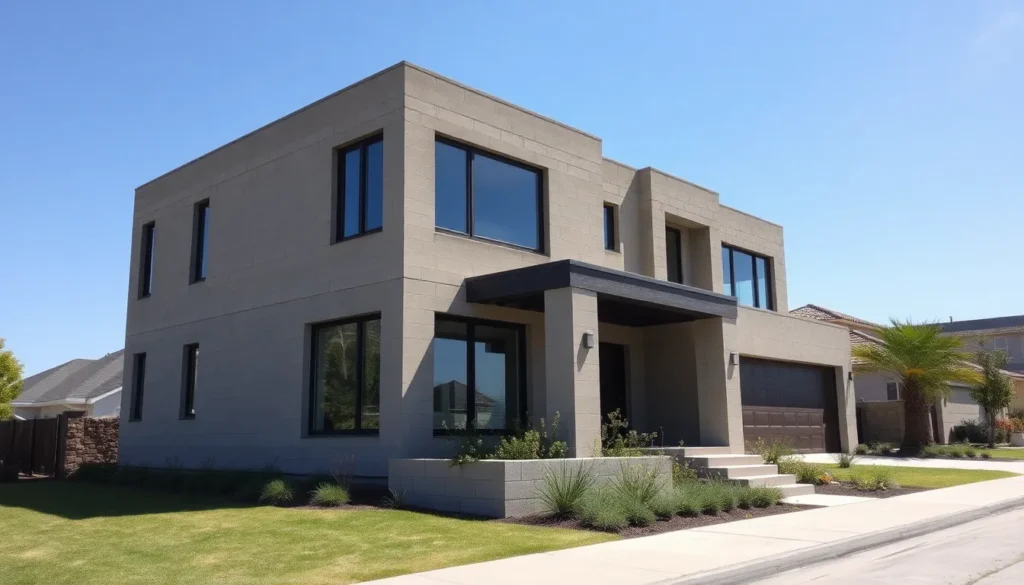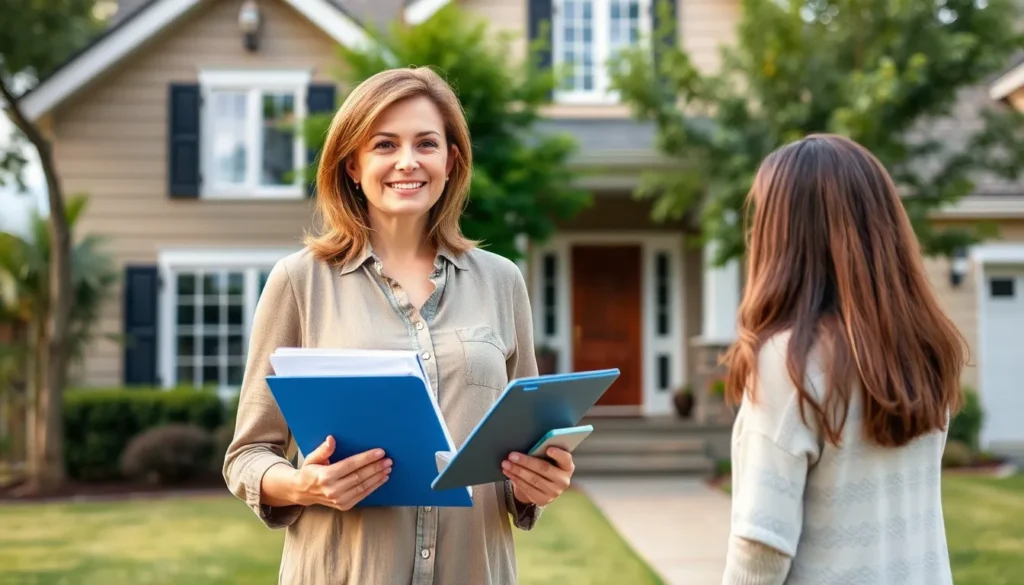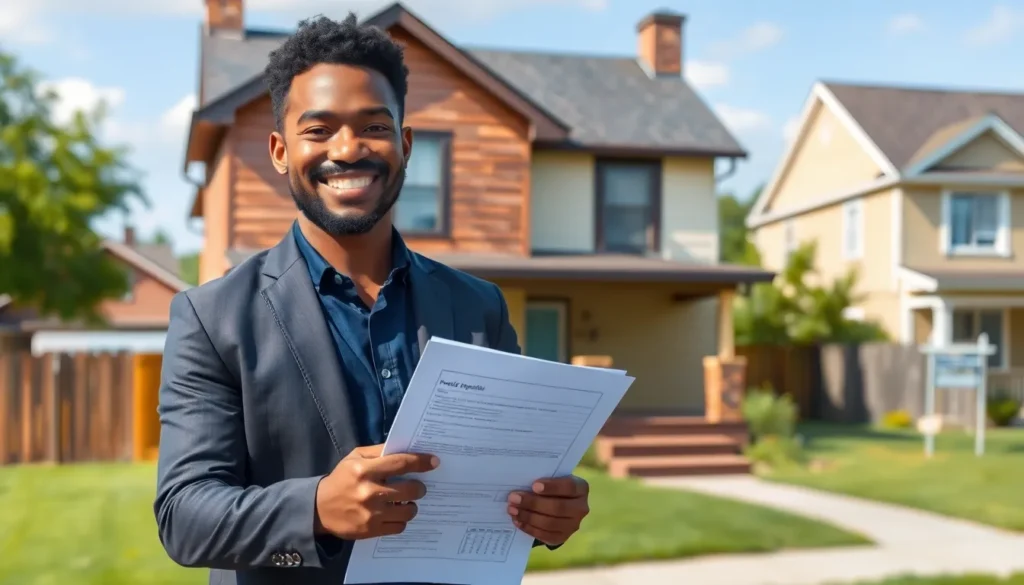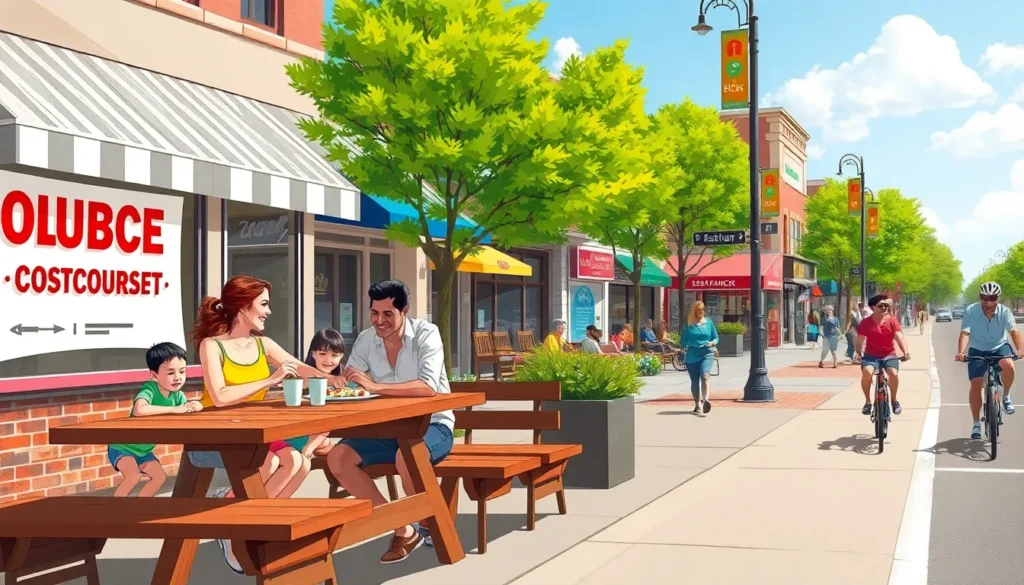In a world where energy bills can feel like a second mortgage, the quest for energy efficiency in new homes has never been more critical. Picture this: a brand-new abode that not only cradles you in comfort but also keeps your wallet from weeping at the end of the month. It sounds like a dream, right? Well, it might just be your new reality.
As builders embrace innovative technologies and eco-friendly materials, the question arises: are new homes truly energy efficient? Spoiler alert: they often are! From advanced insulation to smart appliances, modern homes are designed to sip energy like a fine wine rather than guzzle it like a frat boy at a keg party. So let’s dive into the world of energy-efficient living and discover how new homes can help you save money while saving the planet.
Table of Contents
ToggleUnderstanding Energy Efficiency
Energy efficiency in homes refers to the effective use of energy to perform necessary tasks while minimizing consumption. Many new homes are designed with this principle in mind, using innovative strategies to reduce energy waste.
Definition of Energy Efficiency
Energy efficiency measures how well a home converts energy input into useful output without excessive waste. Appliances, insulation, and building materials play crucial roles in this process. A home that uses less energy for heating or cooling while maintaining comfort levels demonstrates high energy efficiency. Technologies like LED lighting and Energy Star-rated appliances enhance efficiency further. Overall, energy-efficient homes provide essential functions while consuming less power.
Importance of Energy Efficiency in Homes
Energy efficiency significantly impacts both homeowners and the environment. Reduced energy consumption leads to lower utility bills, providing financial relief for families. Sustainable living becomes more accessible through energy-efficient practices, making it essential for modern homes. Furthermore, less energy usage helps decrease greenhouse gas emissions, contributing to a healthier planet. Governments often offer incentives for energy-efficient upgrades, encouraging homeowners to invest in these features. Emphasizing energy efficiency builds resilience against fluctuating energy prices and supports long-term sustainability.
Factors Influencing Energy Efficiency in New Homes
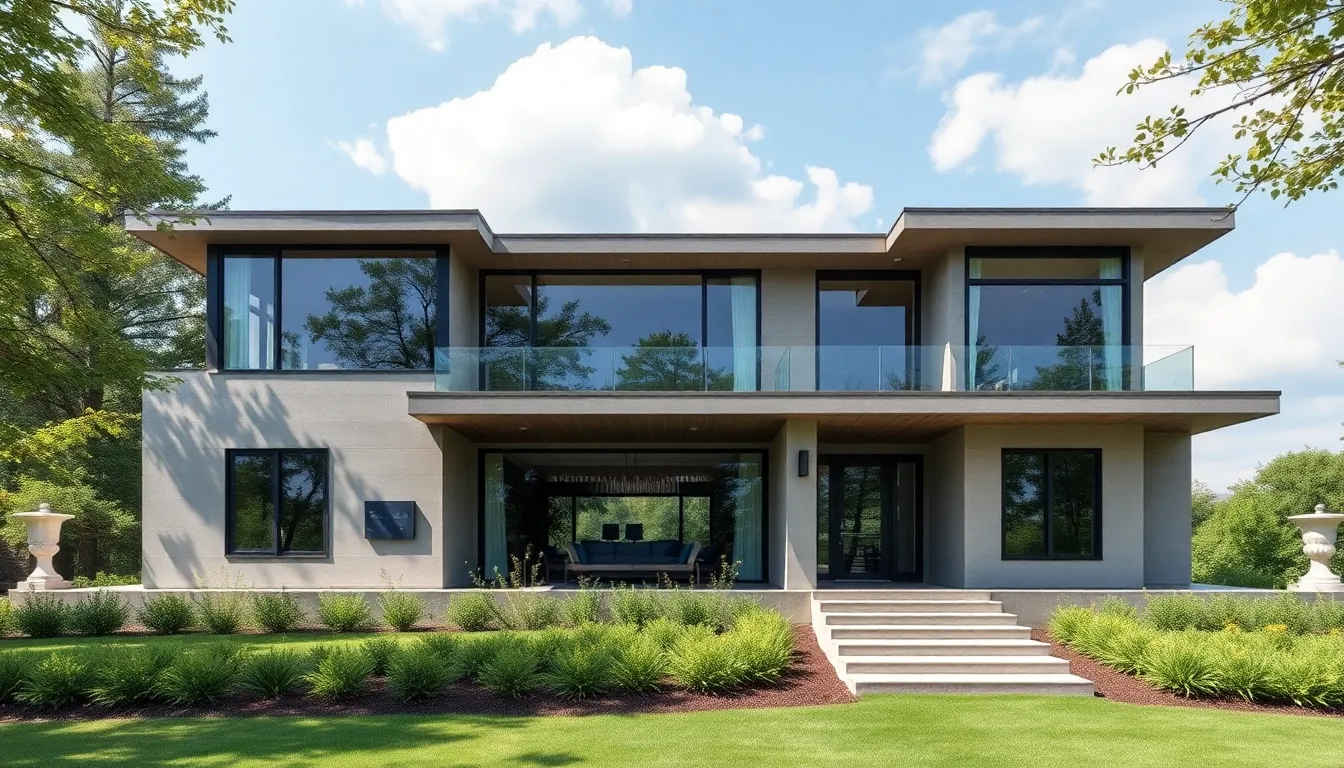
Energy efficiency in new homes relies on various interconnected factors. Understanding these aspects is crucial for homeowners considering energy-efficient investments.
Building Materials
Building materials significantly influence a home’s energy performance. Modern construction often incorporates insulated concrete forms or structural insulated panels. These materials provide superior thermal resistance, assisting in maintaining comfortable indoor temperatures. Energy-efficient windows made with low-emissivity coatings prevent heat transfer, maximizing overall efficiency. Additionally, eco-friendly materials like bamboo and recycled steel reduce environmental impact while offering durability. By choosing sustainable products, homeowners can create a more energy-conscious living space.
Design and Architecture
Design and architecture play pivotal roles in energy efficiency. Smart design choices like open floor plans enhance natural light, reducing reliance on artificial lighting. Proper orientation of homes allows for optimal solar gain, harnessing free energy from the sun. Implementing features such as passive solar heating and cross-ventilation minimizes the need for heating and cooling systems. Architectural design that incorporates overhangs or shading devices further contributes to maintaining ideal indoor temperatures. Each design element works cohesively to foster a more sustainable home environment.
Energy-Efficient Features in New Homes
New homes frequently boast various energy-efficient features that enhance comfort and reduce costs. Homeowners benefit from these innovations through lower energy bills and a reduced environmental footprint.
Insulation and Windows
Energy-efficient insulation plays a crucial role in maintaining comfortable indoor temperatures. Advanced materials, such as spray foam and cellulose, minimize heat loss effectively. Additionally, energy-efficient windows, equipped with double or triple glazing, prevent heat transfer while reducing noise pollution. These windows often feature coatings that reflect heat back inside during winter, enhancing warmth. Together, high-quality insulation and windows create a well-sealed environment, maximizing energy savings.
HVAC Systems
Modern HVAC systems contribute significantly to the energy efficiency of new homes. Systems equipped with variable speed technology adjust output based on demand, ensuring optimal energy use. Smart thermostats further enhance efficiency by learning homeowners’ schedules and adjusting settings accordingly. Properly sized units improve performance and prevent energy waste. The combination of these advanced technologies allows HVAC systems to provide consistent heating and cooling, leading to substantial cost savings over time.
Benefits of Energy-Efficient New Homes
Energy-efficient new homes offer substantial advantages for homeowners and the environment. These benefits include notable cost savings and a positive environmental impact.
Cost Savings
Energy-efficient homes lead to lower monthly utility bills. By utilizing advanced insulation and energy-efficient windows, these homes maintain comfortable indoor temperatures without excessive heating or cooling. Smart appliances, like Energy Star-rated devices, consume less energy, further reducing expenses. Homeowners benefit from long-term savings as energy-efficient systems often require less maintenance and repair. Many jurisdictions provide tax credits or rebates for energy-efficient upgrades, enhancing financial returns over time. As a result, investing in energy efficiency leads to significant cost reductions.
Environmental Impact
Building energy-efficient homes contributes positively to the environment. Reduced energy consumption leads to lower greenhouse gas emissions, helping mitigate climate change. Using eco-friendly materials, such as recycled steel and bamboo, decreases the demand for new resources and minimizes waste. Advanced technologies, like smart HVAC systems, optimize energy use, which reduces overall carbon footprints. Energy-efficient homes promote sustainable living, encouraging a shift toward greener practices. In this way, modern construction helps preserve natural ecosystems for future generations.
Challenges to Energy Efficiency
Energy efficiency in new homes faces several challenges, impacting homeowners and builders alike. Various factors complicate the journey towards optimal energy performance.
Initial Costs
Initial costs often deter homeowners from investing in energy-efficient options. Higher upfront expenses characterize technologies such as advanced insulation and energy-efficient windows. While these features lead to long-term savings, the immediate financial burden can discourage many. Builders may also face challenges in sourcing eco-friendly materials due to price fluctuations. Investments in high-quality materials and systems will save money on utility bills over time. Balancing short-term investments with long-term benefits proves crucial in promoting energy-efficient upgrades.
Technology Limitations
Technology limitations hinder the full realization of energy efficiency potential. Some building systems and appliances may not integrate seamlessly, creating inefficiencies. Additionally, the latest technologies require ongoing updates and maintenance, which can be burdensome. Homeowners often struggle to keep up with rapidly changing energy standards and technological advancements. Although modern homes incorporate energy-efficient features, barriers like lack of knowledge can prevent homeowners from maximizing these innovations. These limitations necessitate a commitment to continuous education and adaptation for both builders and occupants.
New homes are increasingly designed with energy efficiency in mind. This focus not only helps homeowners save on utility bills but also promotes a sustainable lifestyle. By incorporating advanced technologies and eco-friendly materials, these homes minimize energy consumption while maximizing comfort.
The benefits extend beyond individual savings. Energy-efficient homes contribute to reducing greenhouse gas emissions and support a healthier environment. While challenges exist in the initial costs and sourcing materials, the long-term advantages make investing in energy efficiency worthwhile. As the demand for sustainable living grows, new homes are set to play a crucial role in shaping a greener future.

